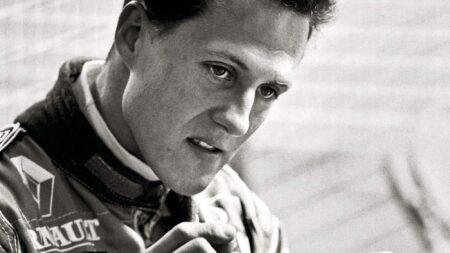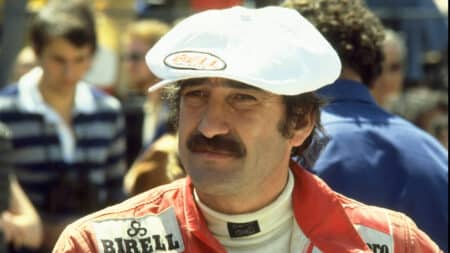By the end of 1995 Ferrari had clocked up the longest drought of their illustrious Fl history, and their glory days seemed to be over. The richest team of the day thanks to their mix of Fiat ownership and Philip Morris tobacco money, they were the example pundits used to prove that money alone couldn’t buy F1 success.
No Ferrari-mounted driver had become world champion since the end of the 1970s, and now the team had gone for five depressing seasons with just two inherited wins.
Schumacher decided it was his vocation to drag Ferrari out of the doldrums
By contrast, Schumacher was the brilliant 26-year-old who, in his first four full seasons, had already won two world titles. Sooner or later he could have picked any drive on the grid, and if he’d gone to McLaren we would have had a monotonous few seasons watching his statistics romp steadily ahead of Alain Prost‘s. Instead he set himself a goal that he knew would prove far tougher than winning those first two titles. He decided it was his vocation to drag Ferrari out of the doldrums, turn round its dismal record of dashed hopes, political bickering and unfulfilled promise, and bring the drivers’ title back to Maranello.
Over the past half-century, seven men have won the world drivers’ championship for Ferrari. The first two fell to Alberto Ascari. He was a driver of undeniable greatness, who nevertheless won his titles against indifferent opposition during the two years that followed Alfa Romeo‘s withdrawal from F1 at the end of 1951. During that period Ferrari’s only serious competition came from Maserati, who were handicapped for an entire season by losing their star, Fangio, while he recuperated from his neck-breaking Monza accident.
Surprisingly Ascari is one of only two men who have ever won more than one title for Ferrari. Fangio always treated offers from Enzo Ferrari with shrewd caution, and thus only ever drove for Maranello in 1956. That produced the fourth of his five titles driving the V8 D50-derived Lancia-Ferrari. Mike Hawthorn, Phil Hill, John Surtees, Jody Scheckter — all of them only managed a single world drivers’ title.








